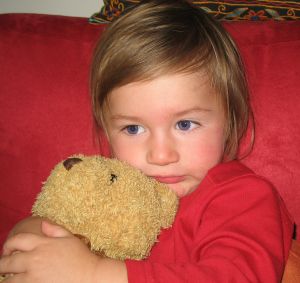By Kelly Bartlett, certified positive discipline educator and leader for East Portland API, Oregon USA
 Skippyjon Jones is a Siamese cat, and he needs a timeout to think about that. Skippyjon Jones, written by Judy Schachner, is a wonderfully imaginative little kitty who likes to pretend he is a Chihuahua. This rubs his mama’s fur the wrong way, and he frequently gets put in a timeout to “think about just what it means to be a Siamese cat.”
Skippyjon Jones is a Siamese cat, and he needs a timeout to think about that. Skippyjon Jones, written by Judy Schachner, is a wonderfully imaginative little kitty who likes to pretend he is a Chihuahua. This rubs his mama’s fur the wrong way, and he frequently gets put in a timeout to “think about just what it means to be a Siamese cat.”
My children and I love the Skippyjon Jones stories, but my “fur” is rubbed the wrong way by Mama Junebug Jones’s ineffective use of timeout. Does Skippyjon ever sit and think about why he is in a timeout? No. Does timeout ever solve the problem of him not acting enough like a cat? Of course not. What does Skippyjon do when he’s in his room “thinking about what he did”?
Timeout does have an important place in positive discipline — when not used as a “thinking tool” or a punitive reaction to an inappropriate action. Rather, timeout should be used in a positive, proactive way, much like those frequent timeouts you took during the final minutes of your high school basketball games, strategizing how to get that winning shot. A timeout is a chance to pause, regroup, and collect ourselves. When emotions are running high, it is a time to calm down and feel better. We can’t improve our game until we all feel better. Here’s what a positive timeout looks like:
- At a time when no one is currently upset, you and your child talk about times when you’ve been really upset. Let kids know that we all get upset sometimes and that’s OK! But it sure doesn’t feel good, so it helps to have a place where we can go anytime to start feeling better.
- Ask your child’s input on where they would want a special “feel good” place. Ask them what they would like to call this special place. Ask what kinds of items they would like in their feel-better spot; create a comfort basket together. A blanket, some soft toys, books, and music are all popular items for comfort baskets. My daughter even added a bottle of bubble bath to hers.
- Then, when it’s time to put the feel-good spot to use, suggest to your child that it would be a good time to go there so he can feel better. Ask if he would like to go alone or if he’d like you to come, too. My children each have different preferences for this.
The more input a child has, the less punitive a timeout will be. Soon, your child will be going to her special spot on her own when she needs some time away. Timeout is effective when it is about feeling better. As Jane Nelsen, author of the Positive Discipline books, advocates: “Children do better when they feel better.” If only Skippyjon’s mom understood this, she might have a different approach to his wacky Chihuahua tendencies!
brilliant! thanks – this is a very useful parenting tool and i will certainly be implementing it in to our household.
I completely agree with this. I use a version of ‘time out’ with my 14 month old, but it’s not a punitive thing. Our time out is more of a distraction and separation from whatever the situation is. Example: she’s screaming because I won’t let her grab a knife out of the dishwasher. I remove her from the kitchen as calmly as is possible with an angry toddler, and we go do something quiet like read a story until she is calmed down. Then I explain to her why we don’t play with knives and that mommy is not trying to be mean.
A she gets older and can communicate more, I will definitely be using the ideas suggested!
This is a great way to explain how timeout SHOULD be used. I have not put this type of thing into practice yet. I HAVE put my 3 1/2 yr old into punitive timeout, where he has to stand in the corner, and it has worked okay, but I have not noticed a decrease in his episodes of getting upset about small things. I definitely need to work with him to help him to control his emotions, and calm down when he gets upset. Thanks for the tips!